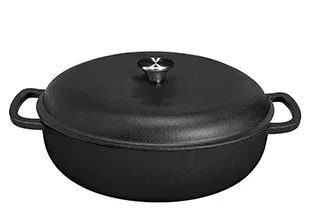
How to Properly Season a Cast Iron Skillet
How to Properly Season a Cast Iron Skillet
Seasoning a cast iron skillet is a crucial step in maintaining its longevity and cooking performance. Proper seasoning not only helps to create a non-stick surface but also protects the skillet from rust and enhances its natural flavor. Here’s a comprehensive guide on how to season your cast iron skillet properly.
1. Clean the Skillet Before seasoning, start by cleaning your cast iron skillet thoroughly. If it’s new, rinse it with warm water to remove any factory residues. For old skillets that may have food build-up, scrub them with a non-metal brush or a sponge using mild soap. Although soap should generally be avoided in caring for cast iron, it’s okay if you’re working with an older pan that needs a deep clean. Rinse and dry the skillet completely to prevent any moisture from causing rust.
2. Preheat the Oven Preheat your oven to around 350°F (175°C). This temperature is ideal for opening the pores of the cast iron and allowing the oil to bond properly to the surface.
3. Choose Your Oil Select an oil with a high smoke point for seasoning. Flaxseed oil is a popular choice due to its durability, but vegetable oil, canola oil, or grapeseed oil also work well. Avoid oils like olive oil—they don’t have high enough smoke points and can lead to a sticky residue.
how to properly season cast iron skillet

4. Apply the Oil Using a clean cloth or paper towel, apply a thin, even layer of oil to the entire skillet. Ensure that the outside and the handle are also coated. It’s important to apply just enough oil to create a glossy finish without any excess pooling in the pan.
5. Bake the Skillet Place the oiled skillet upside down in the preheated oven. To catch any drips, place a baking sheet or aluminum foil on the rack below it. Bake the skillet for about one hour. This process allows the oil to polymerize, forming a hard, non-stick surface.
6. Cool Down After an hour, turn off the oven and allow the skillet to cool inside the oven. This gradual cooling process helps to further solidify the seasoning layer.
7. Repeat if Necessary For best results, especially if your skillet is new or has been poorly seasoned in the past, consider repeating the oiling and baking process 2-3 times to build up a strong non-stick surface.
By properly seasoning your cast iron skillet, you ensure it remains a reliable kitchen companion for years to come, enhancing your culinary creations with each use. Regular maintenance, like avoiding soaking and using mild cleaning methods, will help preserve its seasoning and performance. With care, your cast iron skillet can become a cherished heirloom.
-
Premium Cast Iron Large Griddle | Durable & Even HeatingNewsAug.03,2025
-
Large Cast Iron Griddle Pan-Baixiang County Zhongda Machinery|Non-Stick&Heat RetentionNewsAug.03,2025
-
Cast Iron Cookware Pan- Baixiang County Zhongda Machinery|Non-stick, DurableNewsAug.03,2025
-
Black Cast Iron Pan- ZD Cookware|Non-Stick, Heat ResistantNewsAug.03,2025
-
Cast Iron Cookware Pancake Pan- ZD Cookware|Non-Stick, Even Heat, DurableNewsAug.02,2025
-
Cast Iron Cookware- Baixiang County Zhongda Machinery|Non-Stick, Heat RetentionNewsAug.02,2025


